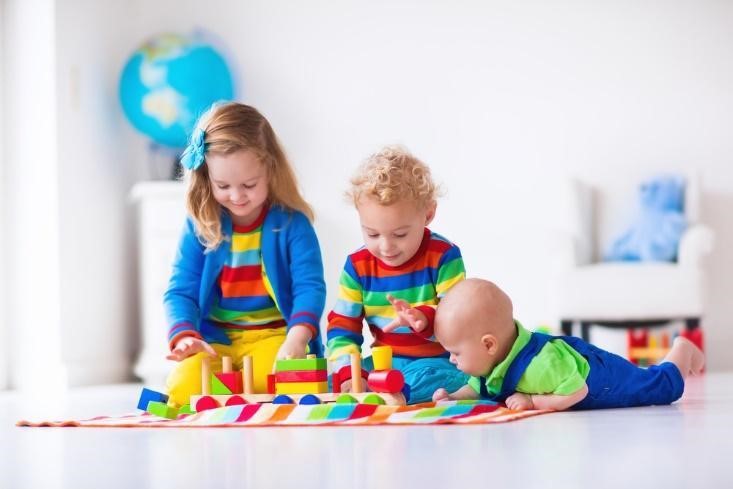Mixed-age group child care situations can have a positive impact on social development
Running a family child care business has many unique advantages and challenges; from sharing personal space to providing next-level service to a smaller group of families, family child care providers often have a perspective that is different from larger child care centers about the day-to-day operations of child care.
One difference that requires a creative approach involves providing services for children across a wide range of ages. Unlike typical care centers with classrooms divided by age, family child care providers often find themselves caring for infants all the way up to preschoolers in one consolidated space.
Early childhood encompasses such a broad variety of interests and abilities that caring for a mixed-age group requires a different mindset. Consider the differences, advantages, and challenges of caring for children of different ages in the same program.
Different ages, different stages
In order to accommodate children of various ages, family childcare providers need to make provisions that include careful consideration of the following.
Scheduling
Children have different needs for naps, meals, and activity depending on their phases of developmental growth. Caring for mixed-age groups involves multitasking and/or having a flexible routine.
Activities
While sleeping and tummy time may be enough for an infant, a preschooler is going to have a wildly different activity level. Providing a range of activity choices to meet the needs of each individual age group is important.
Materials
Having children of different age groups in your care requires a variety of equipment. Select toys, materials, and supplies that are appropriate for the age range represented.
Safety
Keeping children safe is always a priority, but the level of necessary babyproofing differs vastly between immobile infants and on-the-go toddlers. Evaluate every possible hazard, and prevent dangerous situations for all ages.
Advantages of mixed ages
Although caring for children of different ages involves some obstacles, it also has advantages that are in the best interests of the children and their families.
Continuity
It can be difficult for children and families to adjust when the children graduate to new classrooms and teachers based on their birthdays or skill mastery. A mixed-age classroom allows for a continuity of care that fosters an atmosphere of security, comfort, and trust. It also allows siblings to stay together, which can help ease anxiety.
Connections
Exposure to children of different ages over a prolonged period of time allows children to form sibling-like relationships. Older children develop a desire to nurture their younger friends, and younger children admire older peers and may develop skills at a more rapid pace to keep up.
Social development
Being around mixed-age ranges gives children the opportunity to experience a variety of behaviors and developmental phases of play. This can help children learn to cooperate, share, take turns, express feelings, advanced language skills, assume responsibility, and more.
Minimized competition
Early childhood represents a wide range of learning levels among individuals. Mixed-age groups allow children to find where they fit without the pressure of comparing themselves or competing with same-age peers.
Realistic environment
Although classrooms are often segregated by age, real life is not. The world is full of people of all ages, and interacting with other children who are at different developmental phases prepares them for social situations out in their communities.
Being immersed in a mixed-age group care situation is often advantageous to children for a range of reasons. As a caregiver, make sure you can accommodate the children in your care, regardless of their phases of development, and work on expanding their social connections through positive interactions that are suitable for all ages.
The Virginia Infant & Toddler Specialist Network helps improve the quality of care for infants and toddlers through extensive resources, services, and education for caregivers. Learn more about how we can help you improve the standard of care.




